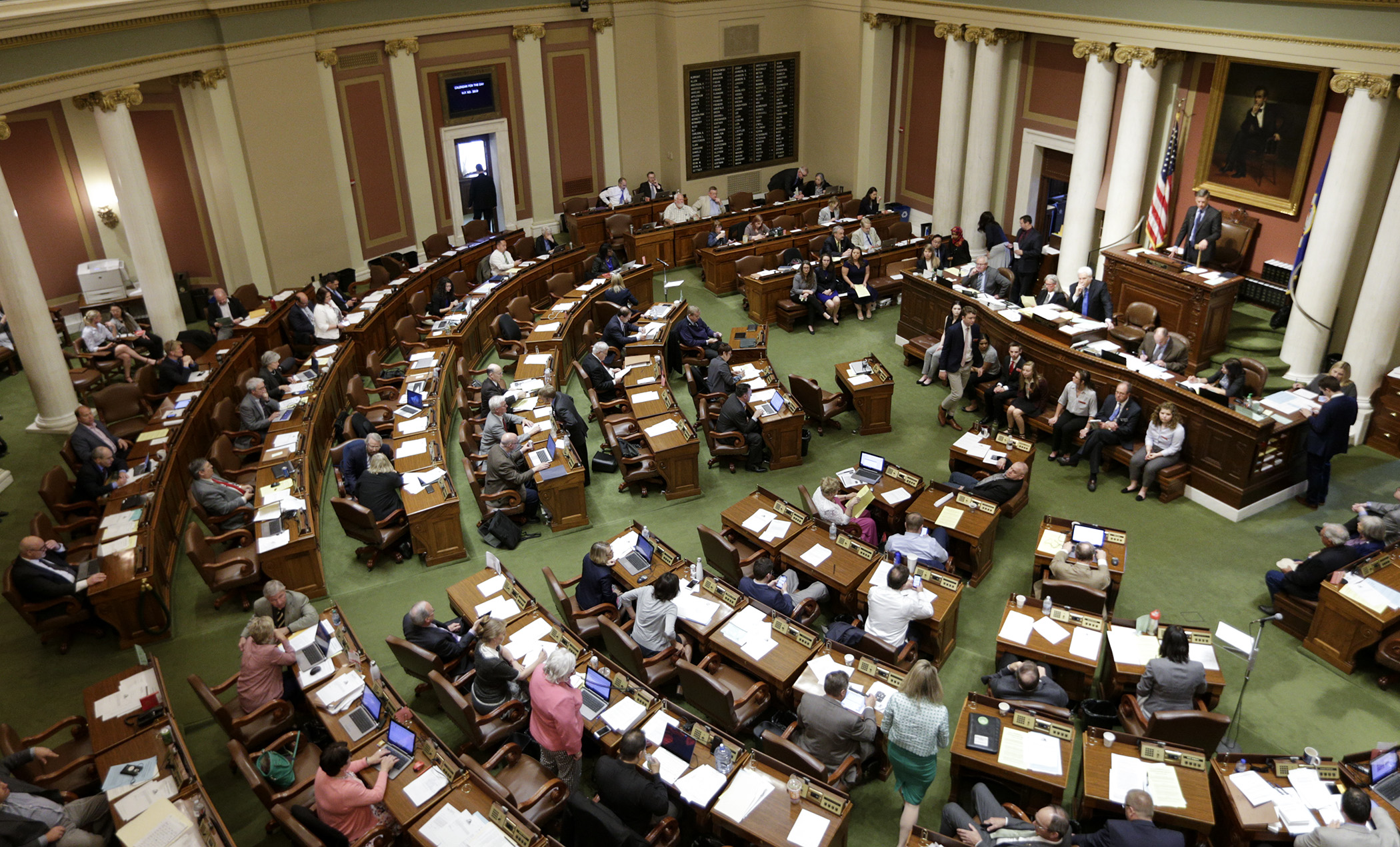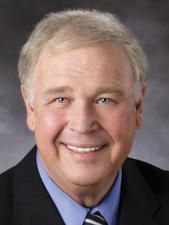Bonding bill going to governor exceeds $1.4 billion in total spending

In a roundabout way, a bonding bill is heading to the governor.
Ultimately, HF4425 was passed, as amended, by the Senate 42-25 late Sunday and repassed 113-17 by the House less than 10 minutes later without discussion.
Sponsored by Rep. Tim Miller (R-Prinsburg) and Sen. Rich Draheim (R-Madison Lake), the infrastructure-heavy plan contains $1.43 billion in total appropriations; $825 million of which would be general obligation bonding.
MORE View the spreadsheet
As introduced and passed by the House May 14, the bill would have appropriated $35 million in proceeds to the Rural Finance Authority which works with local lenders to operate a number of loan programs to help beginning farmers get started in agriculture along with established farmers who want to make capital improvements, add costly equipment or need other assistance. That money remains.
Taken up by the Senate with less than an hour remaining in the session, it was amended to become the bonding bill, amended to change some dates related to creation of a Legislative Budget Office and amended to add eight projects including $29 million for “rehabilitation and renovation of the Fort Snelling Upper Post as a qualified residential rental project.” Senate Minority Leader Tom Bakk (DFL-Cook) said this will make the project eligible for federal funds.
Other projects are:
- $15 million for Highway 10 interchange improvements and an overpass in Anoka;
- $3 million for reforestation and stand improvement on state forest lands;
- $2 million for a rail-grade separation in Ramsey;
- $1.9 million for new large brown bear and large cat exhibits at the Lake Superior Zoo in Duluth;
- $1.36 million to construct a trailhead facility in Ely; and
- $359,000 for new water mains in Rice Lake.
Money for these projects comes from cancellations of previous year allocations and reductions elsewhere in the bill.
Bonding plan earlier in the day
Sponsored by Rep. Greg Davids (R-Preston) and Sen. Roger Chamberlain (R-Lino Lakes), the conference committee report on HF1226 was agreed upon Sunday afternoon. That $1.57 billion package, including $825 million in general obligation bonding, was discussed, then tabled, by the House Sunday night.
“It’s a bill that meets a lot of the needs of the people of Minnesota,” said Rep. Dean Urdahl (R-Grove City), who chairs the House Capital Investment Committee.
Traditionally, the second year of a biennium is focused on capital investment; however, a nearly billion-dollar general obligation package was enacted last session. No bill was passed in 2016.
After receiving $3.3 billion in requests, Gov. Mark Dayton put forth a $1.5 billion plan in January.
“This is clearly a missed opportunity. We have the resources, we have the need and we are not taking care of the things that we need to take care of,” said Myron Frans, commissioner of Minnesota Management and Budget. He also said the administration thinks there are different projects where the money should be spent.
 Rep. Dean Urdahl, chair of the House Capital Investment Committee
Rep. Dean Urdahl, chair of the House Capital Investment CommitteeFor example, Frans noted the governor’s plan would spend $542 million for higher education needs; the agreement is about $180 million, not including the $28 million in user-financing. Additionally, no money for transit is in the agreement.
“This is a lot of money,” Urdahl countered. “It’s not $1.5 billion in G.O. bonds, but it’s $825 million in G.O. bonds and it can do a lot of good for the people of Minnesota.”
Sen. David Senjem (R-Rochester), who chairs the Senate Capital Investment Committee, disagrees with the missed opportunity mantra when biennial bonding is viewed in total.
“You add it up and it’s about $2.6 billion,” he said. “I don’t think we have to be ashamed at all looking at the biennium in terms of meeting our state’s infrastructure needs. That money is more, in my view, than any two-year period in the history of this great state.”
Frans also questioned if the bill will pass muster with bond houses. As introduced in February 2017, the bill was to make clarifying and technical changes to tax policy.
“Normally an omnibus bonding bill either originates as the omnibus bonding bill or the House amends onto a standalone bonding bill,” he said. “The state’s position has been that we should avoid any question or any doubt when it comes to the issuance of debt. Because in order for us to issue debt, we have to receive an unqualified opinion from our outside legal counsel.
“HF1226 does raise a question because the text currently states that it is a non-budget policy and technical bill that contains many provisions amending tax law, but does not clearly act to raise revenue for the state. … The Department of Revenue scored this bill initially to have no positive or negative effect on the state’s budget. It’s of the opinion that the attorney general’s office would need to research whether this file is an appropriate vehicle in order to give their unqualified opinion at a bond sale. As a result, we cannot say with certainty that the sale of bonds authorized by this bill would receive an unqualified opinion from our outside legal counsel.”
Davids doesn’t see an issue, saying the underlying bill “would raise revenue for the state” and would be collecting a tax.
General obligation spending in the conference committee report includes:
- $80 million for higher education asset preservation evenly split between the University of Minnesota and the Minnesota State system;
- $32 million for new veterans homes in Bemidji, Montevideo and Preston;
- $28.1 million for mental health crisis centers;
- $25.35 million for water and wastewater needs in a dozen cities;
- $22 million for Department of Corrections asset preservation;
- $20 million for flood hazard mitigation;
- $18 million to construct a statewide Second Harvest Heartland charitable food facility in Brooklyn Park;
- $15.07 million to construct a state-of-the-art medical examiner’s facility to serve Dakota, Hennepin and Scott counties with flexibility to accommodate future partner counties;
- $15 million for the Upper Harbor Terminal Redevelopment in Minneapolis;
- $15 million for a new visitor’s center at Fort Snelling;
- $10 million for Capitol Complex security upgrades;
- $10 million for public housing rehabilitation; and
- $6 million in asset preservation at the Minnesota Zoo.
Related Articles
Search Session Daily
Advanced Search OptionsPriority Dailies
Ways and Means Committee OKs proposed $512 million supplemental budget on party-line vote
By Mike Cook Meeting more needs or fiscal irresponsibility is one way to sum up the differences among the two parties on a supplemental spending package a year after a $72 billion state budg...
Meeting more needs or fiscal irresponsibility is one way to sum up the differences among the two parties on a supplemental spending package a year after a $72 billion state budg...
Minnesota’s projected budget surplus balloons to $3.7 billion, but fiscal pressure still looms
By Rob Hubbard Just as Minnesota has experienced a warmer winter than usual, so has the state’s budget outlook warmed over the past few months.
On Thursday, Minnesota Management and Budget...
Just as Minnesota has experienced a warmer winter than usual, so has the state’s budget outlook warmed over the past few months.
On Thursday, Minnesota Management and Budget...